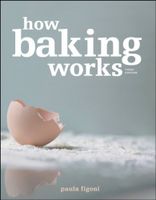Advertisement
Butter
Appears in
By Paula Figoni
Published 2003
Butter is made from heavy cream. While some of the fat in chilled cream is in the form of liquid globules, a large amount consists of tiny solid fat crystals, so tiny that cream seems totally liquid in the mouth. Butter manufacturing involves the separation of this fat, both solid fat crystals and liquid globules, from much of the remaining liquid, or buttermilk.
Table 9.1 Common Additives to Fats and Oils
| Additive | Description | Common Use in Fats and Oils |
| Annatto | Natural coloring from the seed of the annatto (achiote) shrub | Color for butter |
| Beta-carotene | A form of vitamin A | Color for margarine |
| BHA | Synthetic antioxidant; butylated hydroxyanisole | Minimizes oxidative rancidity |
| BHT | Synthetic antioxidant; butylated hydroxytoluene | Minimizes oxidative rancidity |
| Citric acid | Organic acid, especially high in citrus fruits | Minimizes oxidative rancidity, especially in lard and other fats that contain small amounts of iron or other destructive minerals |
| Cottonseed oil, hydrogenated | From seed of cotton plant | Added to plastic shortening to encourage formation of proper beta prime crystal structure for creaming |
| Dimethylpolysiloxane | Silicone derivative | Added to frying fats to reduce foaming and to delay the degradation of fats exposed to high heat |
| Lactic acid esters of monoglycerides | Emulsifier | Added to high-ratio liquid shortenings to encourage formation of proper alpha crystal formation for aeration |
| Lecithin | Emulsifier | Added to margarine to minimize spattering during pan sautéing; added to pan release sprays, to prevent baked goods from sticking |
| Mono- and diglycerides such as glyceryl monostearate | Emulsifier | Added to high-ratio shortenings to increase aeration, moistness, and tenderness, and especially to prevent staling of baked goods |
| Polyglycerol esters (PGE) | Emulsifier | Prevents clouding in salad oil by inhibiting fat crystallization |
| Polysorbate 60 | Emulsifier | Added to high-ratio shortening, to aid creaming and for stabilizing cake batters and icings. |
| Potassium sorbate | Potassium salt of sorbic acid, a natural organic acid | Added to margarine to prevent microbial growth |
| Propyl gallate | Synthetic antioxidant | Minimizes oxidative rancidity |
| Propylene glycol monoesters (PGME), such as propylene glycol monostearate (PGMS) | Emulsifier | Added to high-ratio liquid shortenings. Alpha-tending emulsifier that is highly effective at aerating cake batters; also good at distributing and holding fat, for moistness and tenderness |
| Salt | Sodium chloride | Flavoring and preservative in butter and margarine |
| Sodium benzoate | Sodium salt of benzoic acid, a natural organic acid | Added to margarine to prevent microbial growth |
| Stearic acid | Natural saturated fatty acid | Added to high-ratio liquid shortening. Assists emulsifiers in aerating cake batters and distributing and holding fat, for moistness and tenderness |
| TBHQ | Synthetic antioxidant; tertbutylhydroquinone | Minimizes oxidative rancidity |
| Tocopherols | Mixture of vitamin E and related molecules; antioxidant | Minimizes oxidative rancidity |
| Vitamin A palmitate | Added to margarine as a vitamin | |
| Vitamin D | Added to margarine as a vitamin |

